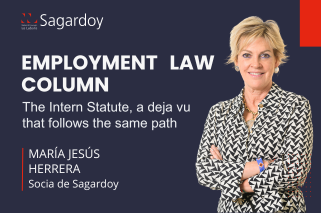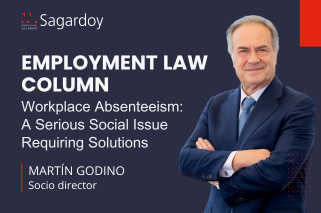At this point, well into the 21st century, no one doubts the attraction that Labor Law exerts over all relationships in which a service is provided in exchange for remuneration, which has been referred to as the “attractive force” of the employment contract. As evidenced by the Workers’ Statute, the employment contract is presumed to exist between anyone who provides a service on behalf of and within the scope of organization and direction of another, in exchange for remuneration from the latter.
The characteristics of personal work, dependence, and alienation that Labor Law enshrines to consider a relationship as an employment contract are already a classic in our legal field. However, these characteristics have led to numerous conflicts in the courts, as there has been a question of whether we are dealing with an employment contract or, on the other hand, with other equally valid legal formulas regulated in our law. And always analyzing the same issues: hierarchical subordination, independence in the provision of services, alienation of risks, self-organization, and the availability of personal resources, among many other aspects that are analyzed when the conflict arises.
Although, as I mentioned, this is not a new topic but a classic, the changing current reality has brought this issue back to the forefront of discussion, both in the courts and in social reality. The much-discussed digitalization, the rise of digital media, artificial intelligence, and the different forms of service provision that have emerged today have brought the question of when we are facing an employment contract, with all its implications, and when we are dealing with a professional who organizes their activity and the time they devote to it according to their own criteria, not subject to specific instructions, but with the freedom to determine aspects that can be decisive for the qualification of the relationship.
The paradigm of this discussion arises with platform work and the emergence of a triangular relationship between the company, the service provider, and the end customer, all organized through a platform and using algorithms that often organize the activity. Reports indicate that Spain is one of the countries where the highest volume of people works through digital platforms; 2.6% of the active population depends on work through digital platforms, with much higher percentages if we consider those who have worked on them at any point.
A paradigm of this form of service provision has been the work provided by riders for food delivery platforms and, in general, all types of product distribution. Its evolution has recently been widely discussed in society, often associating it, and therefore criticizing it, with precarious work, lack of social protection, and deregulation of activities that allow bypassing labor protection rules in all areas. First, it was the Supreme Court declaring individuals who had provided services on these platforms as workers, and then the legislator, through Royal Decree-Law 9/2021, which introduces into labor law the presumption of employment for activities related to the delivery or distribution of any consumer product or goods, when the company exercises organizational, managerial, and control powers over the activity through the algorithmic management of the service or via a digital platform.
In the same vein, there is a proposal for a Directive in the European context developed by the European Commission, which aims to improve working conditions in digital platform work, setting out criteria to determine if a digital platform is an employer, incorporating the classic criteria of remuneration, supervision, organization of work time, and organization of activity in various aspects.
It is logical for the legislator to intervene to try to avoid labor precariousness and prevent these types of jobs from creating a kind of productive subeconomy. However, one cannot fall into, and it is being done, an a priori assertion that every service provider for a third party, whether or not they use digital systems or means in their activity, is automatically a worker in the strictest sense simply because they use these means or because they provide the service following certain criteria set by the entity for which the service is provided. It is not true that there is no space for other types of civil, commercial, professional, or whatever they may be called, relationships in which a natural person provides paid services for a company, while still remaining an independent professional, often in professions that have traditionally been liberal, such as doctors, lawyers, architects, psychologists, or even teachers. In these cases, it remains necessary to analyze the way in which the service is provided, its organization, and not to insist on turning, or even demonizing, relationships that do not fall within its scope simply because they do not meet the requirements for it.
The current extension of the content of Article 311 of the Penal Code, to include heavy penalties for those who “impose illegal conditions on their workers by hiring them under formulas outside the employment contract,” is proof of this unjustified trend, promoted by the public authorities, to prevent any formula that does not fit, because it cannot fit, into an employment contract.
It is evident that we face a complex scenario in the functioning of the labor market, because the rules, policies, and institutions of the labor relations system are changing and require constant adaptation. Technological changes and new forms of organization demand this, but not by disregarding the interpretations of our judicial history or the pillars that have supported Labor Law for decades.



